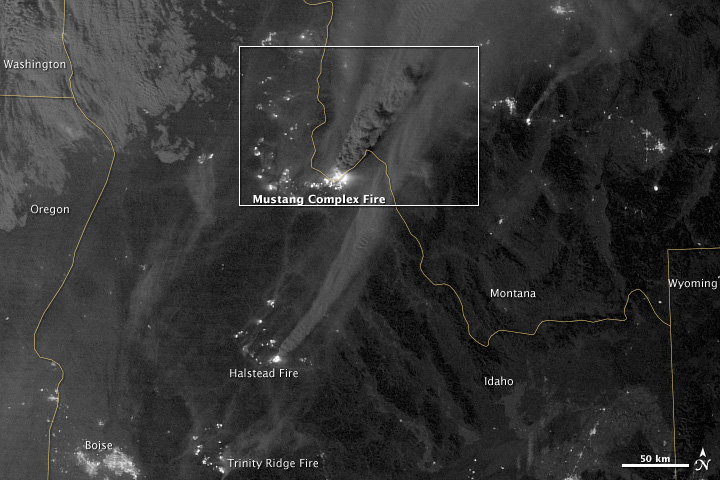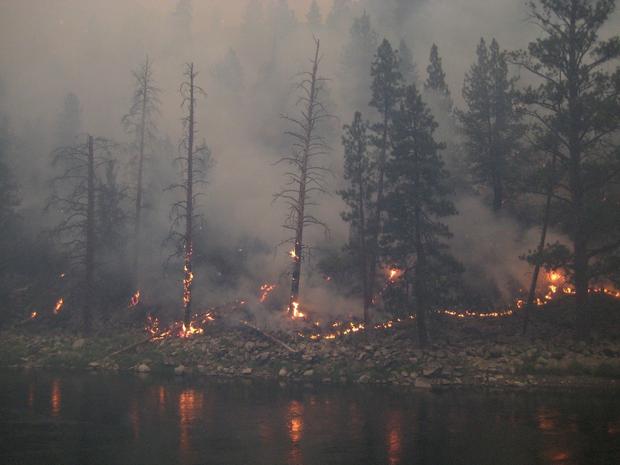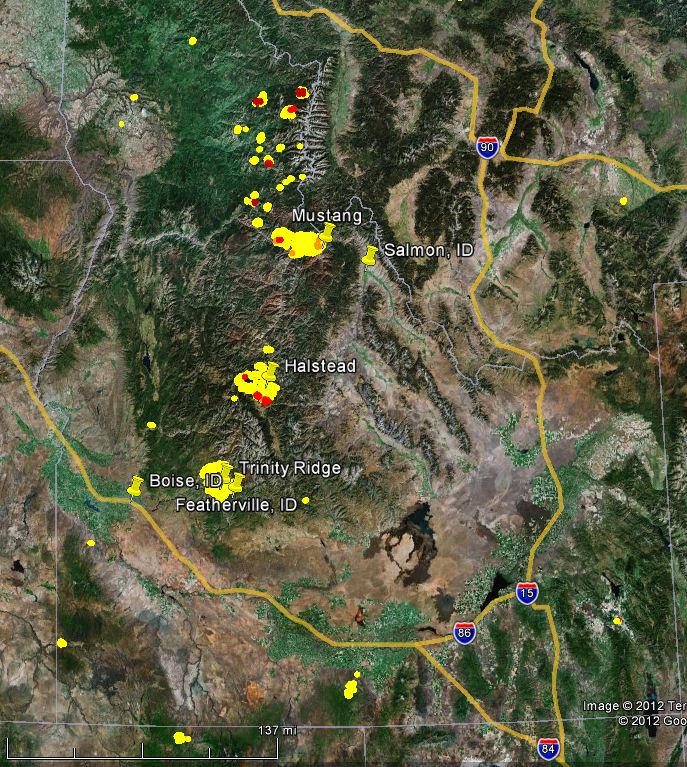
Fire managers have set up a new camp in the West Fork of the Bitterroot to engage the Montana portion of the enormous Mustang Fire that started in Idaho and burned across the state line.
A roll-over vehicle accident occurred in the Sage Creek area this afternoon; one person was transported and admitted to a local hospital.
The complex is just 16 percent contained tonight at well over 205,000 acres [map]. A couple hundred firefighters will be assigned to the new fire camp.

Brian Harris, a fire information officer on the Mustang Complex, said the fire’s burned to within a couple of miles of the Hughes Creek area of the West Fork of the Bitterroot.
“This fire is so large and so massive and the weather has been so uncooperative that firefighters have only been able to put speed bumps in front of the fire in an attempt to slow it down,” Harris said.
He said crews are installing sprinklers and removing fuels in some areas. USFS Darby District Ranger Chuck Oliver said there’s some concern about the proximity of the fire to the Lost Trail Ski Area – not far from a contentious area of late with locals because of the ski cabin built and run by locals who have recently been unjustly stiffed by the USFS.
Late Thursday afternoon, the fire was about 12 air miles away from the ski area.
“We don’t want to give people any indication that the fire is imminent,” Oliver said. “We are just beginning to talk about the what-ifs so we can start preparing contingency plans should the fire move this way.”
The fire took off and made a 30,000-acre run on Tuesday. Air quality conditions in the Missoula and Bitterroot valleys had deteriorated by Thursday afternoon, according to the Billings Gazette, from smoke pouring in from Idaho.








